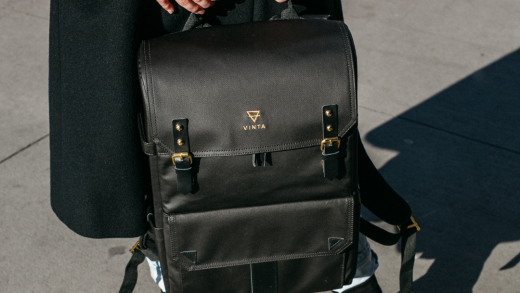The journey to weight loss can often feel overwhelming, especially when it comes to finding effective workouts that fit into a busy lifestyle. With the right home workouts, individuals can achieve their fitness goals and lose weight without the need for a gym membership. These workouts are not only convenient but can also be tailored to suit different fitness levels and preferences.
Incorporating a variety of exercises into a weekly routine can maximise results. Activities like bodyweight exercises, resistance training, and high-intensity interval training (HIIT) can be performed at home with minimal equipment. This flexibility allows anyone to maintain consistency and stay motivated on their weight loss journey.
Moreover, a well-rounded approach that combines strength training, cardio, and flexibility work can enhance overall fitness. By focusing on building strength and endurance, one can effectively burn calories and accelerate weight loss while avoiding plateaus. Embracing these home workouts can lead to sustainable lifestyle changes and improved health.
Foundations of Effective Home Workouts for Weight Loss
Creating an effective home workout routine involves understanding the benefits of exercising at home, how physical activity aids in fat loss, and the role of metabolism in calorie burn. Each of these factors contributes significantly to achieving and maintaining a healthy weight.
Benefits of Exercising at Home
Exercising at home offers several advantages that can support weight loss. Convenience is a primary factor; individuals can work out on their schedule without commuting to a gym. This flexibility often leads to more consistent exercise habits.
Home workouts can also be cost-effective. There is no need for expensive gym memberships or travel expenses. This allows for the potential investment in quality equipment or fitness resources.
Additionally, exercising at home creates a comfortable environment tailored to personal preferences. This can enhance motivation and reduce anxiety, making workouts more enjoyable.
How Exercise Promotes Fat Loss
Exercise plays a crucial role in promoting fat loss by increasing the number of calories burned. When engaging in physical activity, the body uses stored fat and carbohydrates for energy.
Different types of workouts can further enhance fat-burning:
- Cardiovascular exercises (e.g. running, cycling) can significantly increase heart rate, leading to higher calorie expenditure.
- Strength training builds muscle, which in turn raises the resting metabolic rate, meaning more calories are burned at rest.
- High-Intensity Interval Training (HIIT) combines both cardio and strength training for an efficient and effective workout.
Incorporating a mix of these exercise types can maximise fat loss and lead to sustainable weight management.
Understanding Metabolism and Calorie Burn
Metabolism refers to the biochemical processes that convert food into energy. It governs how efficiently the body burns calories. Factors influencing metabolism include age, gender, muscle mass, and activity level.
The term “calorie burn” describes the total number of calories expended during activity. A higher muscle mass can enhance resting metabolic rate, leading to increased calorie burn even when at rest.
Integrating consistent exercise into daily routines can positively impact metabolism. By elevating heart rates and engaging various muscle groups, individuals can effectively boost their overall caloric expenditure, aiding in weight loss.
Types of Home Workouts for Weight Loss
Effective home workouts for weight loss encompass various exercise types that target fat loss and improve fitness levels. The following categories highlight key workout strategies individuals can incorporate into their routines.
Cardio and Aerobic Exercises
Cardio and aerobic exercises are essential for promoting cardiovascular health and burning calories. These activities elevate the heart rate, encouraging fat loss while enhancing endurance.
Popular cardio options include:
- Jumping jacks
- Running or jogging in place
- High knees
- Dancing or Zumba
These exercises can be done with minimal equipment, making them accessible for home workouts. Engaging in cardio sessions for at least 150 minutes a week is recommended for optimal results. This can be broken down into manageable intervals, such as 30 minutes a day, five days a week.
Strength and Resistance Training
Strength and resistance training focus on building muscle mass and boosting metabolism. This type of exercise is crucial for preserving muscle tissue while losing weight.
Bodyweight exercises such as:
- Push-ups
- Squats
- Lunges
- Planks
It can be effectively performed at home without the need for weights. Incorporating resistance bands or dumbbells can enhance these workouts. Aim for at least two sessions per week targeting all major muscle groups to support weight loss and muscle development.
HIIT and Interval Training
High-Intensity Interval Training (HIIT) combines short bursts of intense exercise with recovery periods. This method is efficient for burning calories and fat in a shorter amount of time.
A typical HIIT session may include:
- 20 seconds of burpees, followed by 10 seconds of rest
- 30 seconds of mountain climbers, followed by 15 seconds of rest
This pattern can be repeated for 15 to 30 minutes, depending on fitness level. HIIT workouts stimulate metabolic rate, leading to continued calorie burn after the workout is complete, known as the afterburn effect. Incorporating HIIT into a weekly routine can significantly aid in weight loss.
Essential Home Workout Exercises
This section highlights key exercises that can easily be incorporated into a home workout routine. The outlined movements cater to various fitness levels, focusing on strength, endurance, and flexibility.
Bodyweight Movements
Bodyweight exercises are highly effective for building strength and can be done anywhere. Popular options include:
- Squats: A fundamental lower-body exercise that targets the quads, glutes, and hamstrings. Proper form includes keeping the back straight and knees behind the toes.
- Lunges: They engage the legs and core while improving balance. Variations like side lunges can also be included for added intensity.
- Planks: This isometric exercise engages multiple muscle groups, emphasising core stability. Variants include side planks and plank shoulder taps for increased difficulty.
These movements can be performed in circuits for improved cardiovascular benefits while effectively aiding weight loss.
Resistance Band Exercises
Resistance bands can enhance bodyweight exercises by adding extra resistance, allowing for greater muscle engagement. Important exercises include:
- Glute Bridge with Resistance Band: This targets the glutes and hamstrings. It begins with the band placed above the knees, ensuring the glutes work harder.
- Chest Press: Anchoring the band at shoulder height, this strengthens the chest and arms, providing a solid upper-body workout.
- Rows: Sit with legs extended and the band under the feet. Pull the bands towards the torso to enhance back strength.
Incorporating these exercises promotes a full-body workout, crucial for effective weight loss.
Low-Impact Options
For those seeking less intense activities, low-impact exercises can still burn calories without stressing the joints. Effective choices include:
- Walking or cycling: These are great for cardiovascular fitness. They can be done outdoors or on a stationary bike at home.
- Jumping Jacks and High Knees: These aerobic moves elevate heart rates. Modifications can make them suitable for various fitness levels.
- Yoga: This practice improves flexibility and core strength. Poses such as the warrior and downward dog enhance balance while promoting relaxation.
These activities complement high-intensity workouts, facilitating recovery while contributing to overall fitness.
Flexibility and Core Strength
Incorporating flexibility and core-strengthening exercises is essential for comprehensive fitness. Key movements include:
- Crunches: Target the abdominal muscles and can easily be modified for different levels. Variants like bicycle crunches add diversity.
- Mountain Climbers: These work the core while providing a full-body cardiovascular challenge. They can be intensified by increasing speed.
- Stretching: Regular stretching routines aid recovery and prevent injury. Key stretches focus on major muscle groups used during workouts.
Combining these exercises ensures balanced development and support for endurance activities, aiding in weight loss goals.
Tips for Maximising Results at Home
Achieving effective home workouts for weight loss requires a focused approach. Establishing a routine, integrating diet, and maintaining motivation are crucial for success.
Creating a Structured Routine
A structured routine promotes consistency and sets clear expectations. Scheduling workouts at the same time each day can make exercising a habit.
Using a calendar can help in tracking workouts. She should aim for a mix of cardio, strength training, and flexibility exercises to engage different muscle groups.
For weight loss, a target of 30–60 minutes per session is often effective. Including short breaks can enhance endurance. Additionally, selecting specific days for particular workouts, such as strength on Mondays and cardio on Wednesdays, helps maintain variety.
Combining Diet and Exercise
Diet plays a significant role in weight management alongside exercise. She should focus on a balanced intake of macronutrients—proteins, fats, and carbohydrates.
Incorporating whole foods like fruits, vegetables, and lean proteins can aid in maintaining energy levels for workouts. Tracking calorie intake can help identify areas for improvement.
It is beneficial to stay hydrated, as water aids in metabolism and reduces hunger. Preparing meals in advance simplifies healthy eating habits, especially on busy days.
Staying Motivated Without a Gym Membership
Without a gym membership, motivation is essential. Setting specific, achievable goals can foster a sense of purpose and accomplishment.
Joining online workout communities or following fitness influencers can create a supportive environment. She might also consider tracking progress through fitness apps to visualise improvement over time.
Variety is key; incorporating new activities such as yoga, HIIT, or dance can keep workouts engaging. Setting rewards for reaching milestones can provide additional encouragement and make the fitness journey enjoyable.





